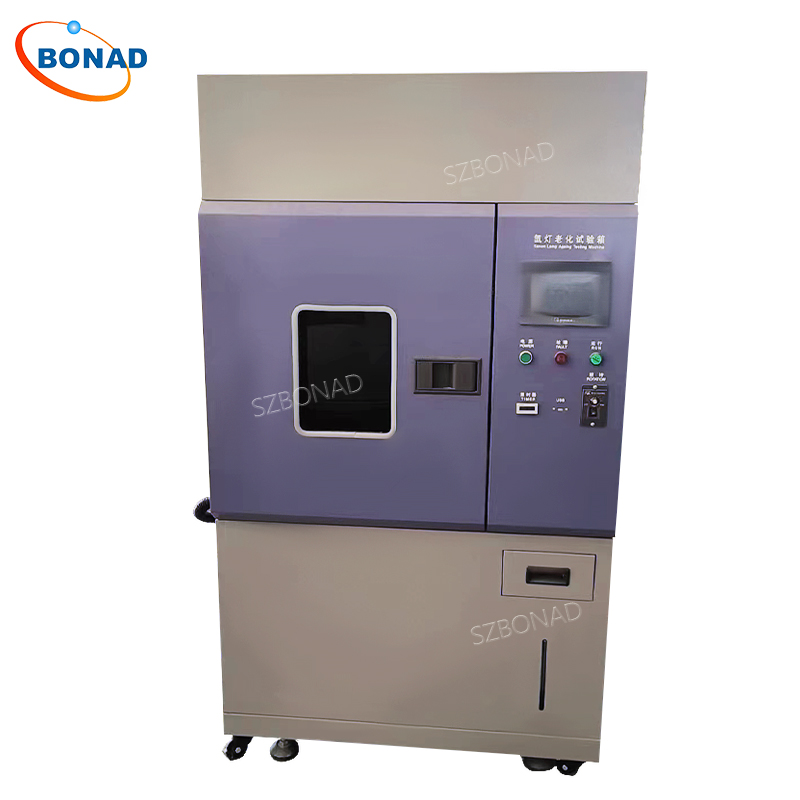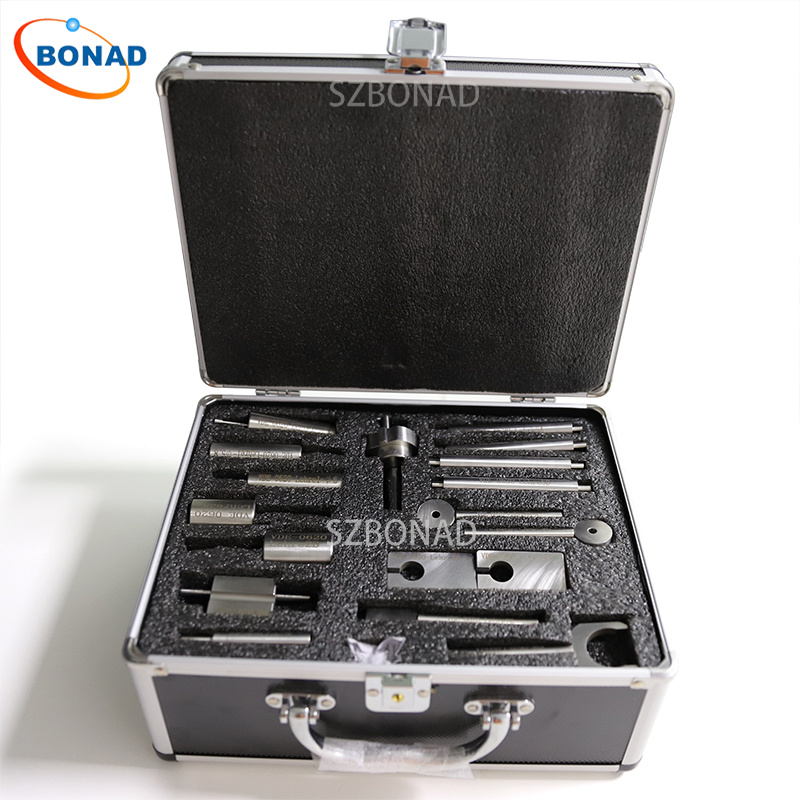Xenon lamp aging test is a test that simulates the full sunlight spectrum. It is currently the best test for simulating artificial climate reliability test. It can simulate artificial climate test close to nature in a short time. Xenon lamp aging test can be used for the selection of new materials, improvement of existing materials or evaluation of durability changes after material composition; it can provide corresponding simulation test environment and accelerated test for scientific research, product development and quality control. It can better simulate the changes of products exposed to sunlight in different environments.
BONAD uses xenon lamp light source to simulate the effect of sunlight, uses pure water spray in the box to simulate rain and dew, and controls the change of thermal energy through software, so that the tested material is placed in a cycle program of alternating light and moisture at a specific temperature for testing. Aging that occurs outdoors for several months or even years can be reproduced in a few days or weeks. The collected test data helps people choose new materials and transform existing materials.

Purpose of xenon lamp aging test
Xenon arc lamps that simulate the full sunlight spectrum are used to reproduce destructive light waves that exist in different environments, including visible light, ultraviolet light and infrared light, providing corresponding environmental simulation and accelerated testing for scientific research, product development and quality control.
The principle of xenon lamp aging
The spectral energy distribution of the xenon lamp aging test in the ultraviolet and visible regions is similar to that of sunlight. The radiation emitted by the xenon lamp passes through the filter to filter out the shorter ultraviolet light waves below 290nm and the infrared light waves above 1200nm, so that the spectrum reaching the surface of the sample is close to the spectrum of sunlight.
Paints, plastics and other organic materials exposed to natural climate conditions and light radiation will lose gloss, fade, yellow, peel, crack, lose tensile strength and fall off the entire layer after a period of time. Even indoor light or sunlight through window glass can cause damage to substances such as pigments or dyes.
Xenon lamp aging factors
Generally speaking, the simultaneous effects of light, temperature and humidity will have an impact on the accelerated aging of the product.
Light: Sunlight can be divided into ultraviolet rays, visible light, and infrared rays due to different wavelengths. Generally speaking, ultraviolet rays have the greatest impact on objects. Paints and plastic products directly exposed to ultraviolet rays will age faster. For those materials that are not very stable, even if they are exposed to visible light or infrared light, they will age, such as some pigments and dye products. Therefore, the intensity of ultraviolet rays in light is crucial to the aging of products.
Temperature: Generally speaking, the higher the temperature, the more active the molecules of the material exposed to high temperature, and at the same time, with ultraviolet rays, the aging effect can be accelerated. Under the condition of a certain ultraviolet intensity, the higher the temperature, the greater the destructiveness to the material. Therefore, during the test, the aging of the material is often accelerated by increasing the temperature of the xenon lamp aging test chamber studio.
Humidity: Generally, a humid environment promotes the aging of the material. In the natural environment, rain, dew, and humidity in the air will play a corresponding role in the aging of the material, and dew plays a decisive role, so the xenon lamp aging test chamber must also simulate various humidity environments during the test to accelerate the aging of the material.


